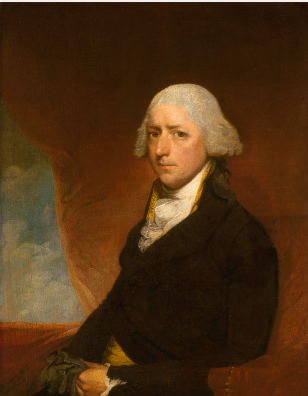Have you ever seen a grave marker and wondered about who was buried there? For my Beyond the Grave class, two of my classmates and I did a combined blog post on the Circular Congregational Church in Charleston, SC, that you can read about here. For this blog post, I chose someone who is buried in the Circular Congregational Church cemetery and researched their life.
 |
| John Ashe (photo from findagrave) |
I picked Colonel John Ashe to research because he built a beautiful house on the battery in Charleston, that is now famous for its distinct look and high value. According to Find a Grave, John Ashe was born in 1760 in Charleston, SC. He married Marie De Veaux Ashe, and had four children, Richard Ashe, John Ashe Jr., Eliza Livingston, and Harriet Ashe, referring to his will on Ancestry.com.
According to Ashefamily.info, John Ashe made his money by importing goods in South Carolina. He was very wealthy for the time period, and he owned many different properties throughout and around Charleston. He was also a planter, mentioned in a historical and archeological survey, located on the Charleston Museum website. He owned land lots on a couple of different plantations.
On Ancestry.com and every other website I have seen, he is referred to as "Colonel John Ashe" however, I can't find any record of him being in the military. Also, his tombstone refers to him as "John Ashe Esqr." Esqr meaning esquire, which leads me to believe that he had some kind of high social standing.
If you have ever taken a walk along the Battery (Battery Street) in Charleston, SC, then you are well aware of the beautiful houses that face out towards the water and you have probably admired them. John Ashe built one of these classic Charleston homes around 1782, which is now called the Colonel John Ashe House. It sits on Battery Street, close to the intersection of King Street and Battery Street. According to Wikipedia in 2015, the house "became the most expensive house sold in Charleston when it fetched about $7.72 million."
 |
| The Col John Ashe House around 1933 (photo from loc.gov) |
One thing that makes the house so unique is its' cupola, the dome-like structure on the top of the house. It was lit up at night and according to Ashefamily.info, "the house is said to have served as a lighthouse for sailors coming into Charleston harbor."
John Ashe owned over a thousand acres of land, according to his will located on ancestry.com. One of the plantations he owned was the Willtown Bluff Plantation, which has a long history dating back to 1697.
During the time Ashe owned it, he built a rice mill on the property according to a historical and archeological survey of Willtown Bluff Plantation, found on the Charleston Museum website. The survey also says, "during the Civil War the area was occupied by Confederate forces who built the fort on the edge of the bluff." The Union forces burned stores of rice and the rice mill. Willtown also had a long history of slavery with cotton and rice being the main crops grown there.
 |
| A page that was taken out of the Historical and Archeological Survey of Willtown Bluff Plantation, showing the chimney from the rice mill Ashe built. |
John Ashe died in 1828, at the age of 68 years old, and is buried in the Circular Congregational Church graveyard. His grave marker is a box tomb and his wife's box tomb is placed right next to his. One thing that is written on John Ashe's tomb says, "he sustained character of a fond husband and affectionate parent, a kind master and a faithful friend."
 |
| John Ashe's grave (photo from findagrave.com) |
 |
| John and Marie Ashe's graves (photo from findagrave.com) |
No comments:
Post a Comment